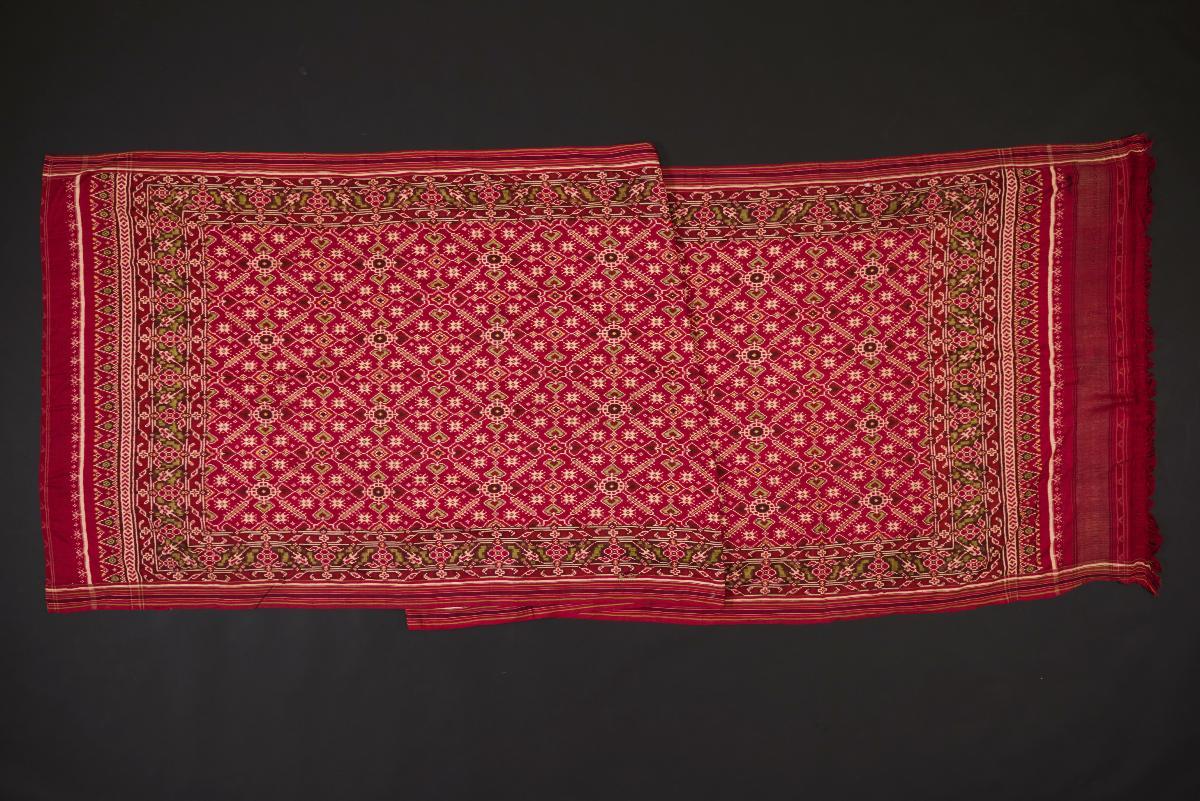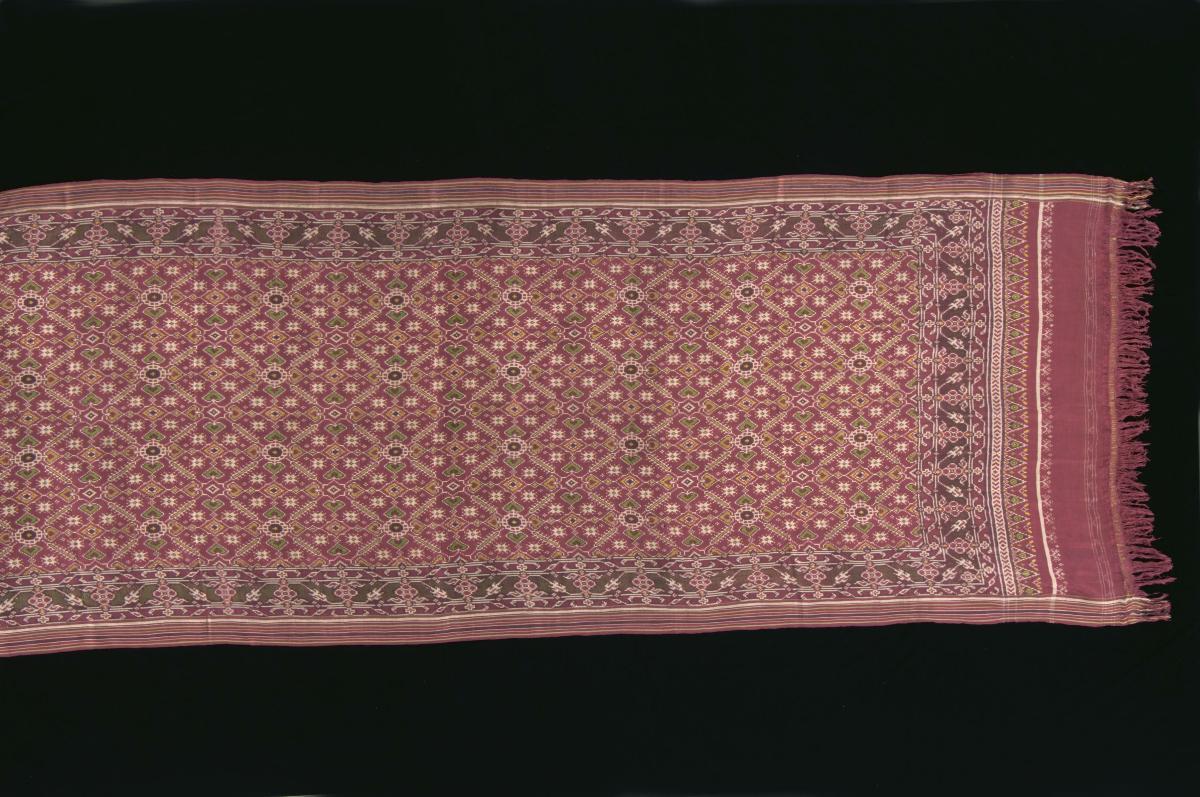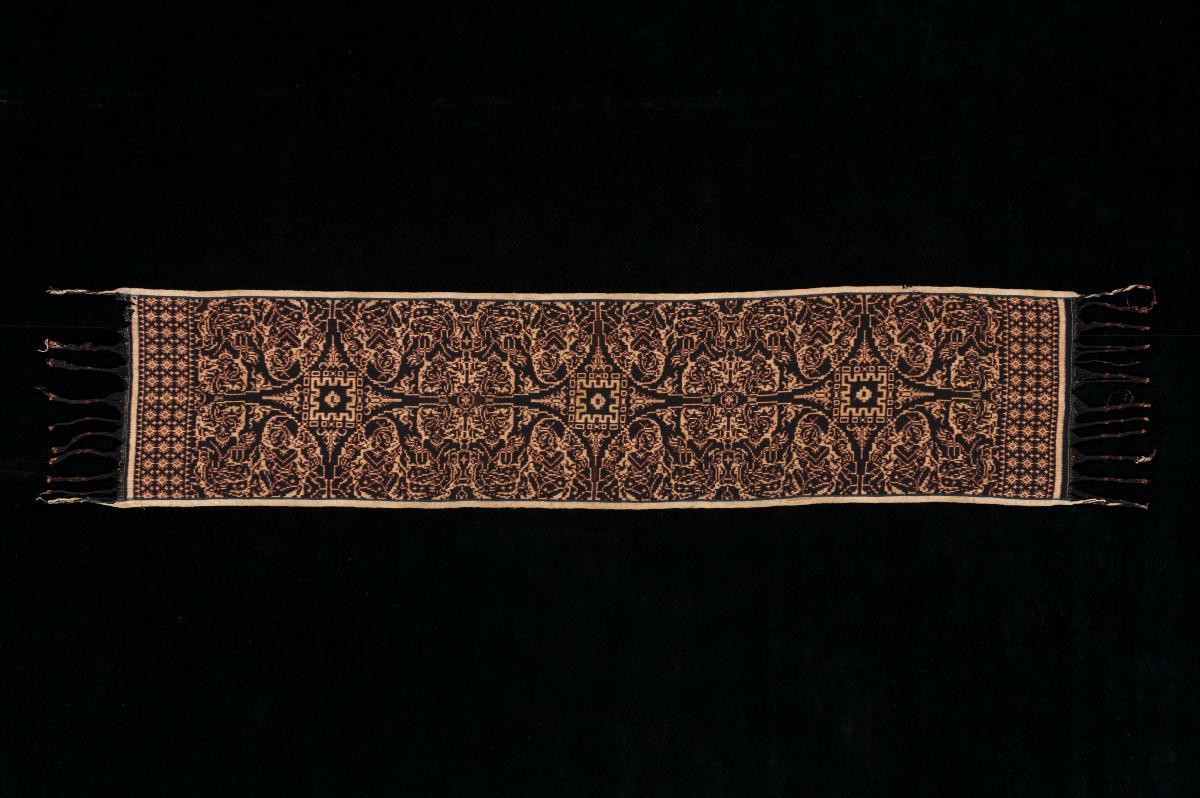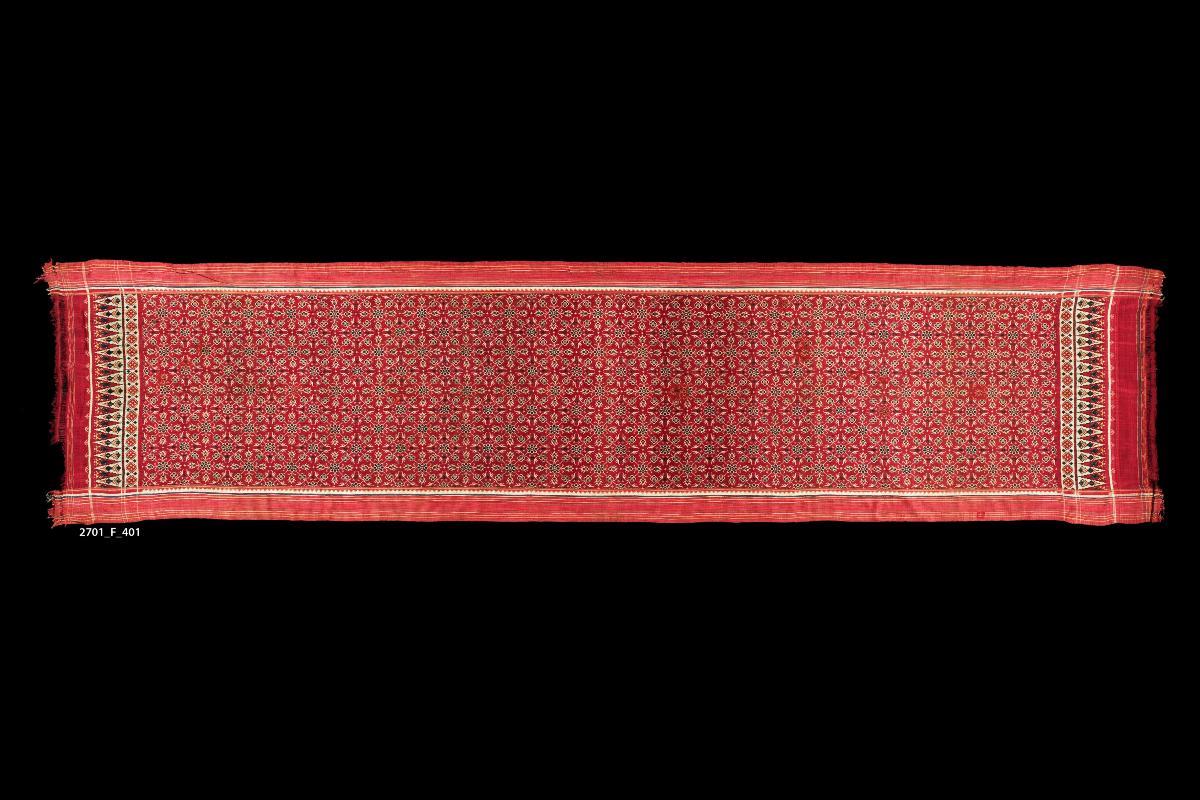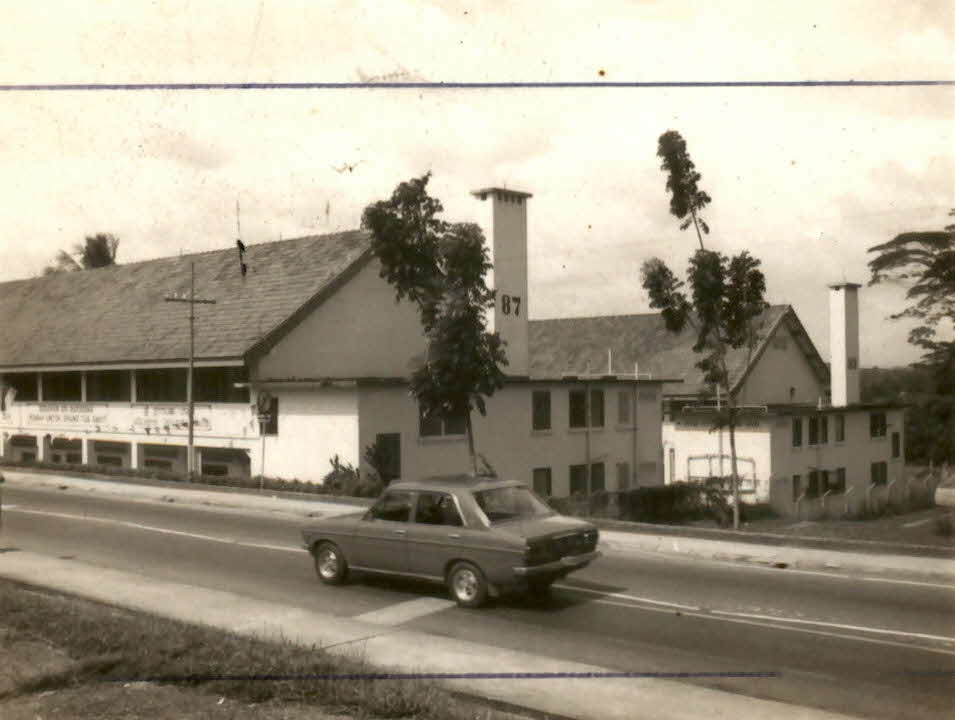This is a traditional Patan patola, named after Patan in north Gujarat, the most famous centre for patola weaving in India. Saris like this were reserved for weddings and other special occasions and are heirlooms passed on from mother to daughter or daughter-in-law. Patola (double ikat) weaving is an extremely difficult technical process, in which both the warp and the weft are resist-dyed prior to weaving. Time-consuming and requiring much skill and patience, it takes from six months to a year to make one sari. They are therefore expensive and highly prized, historically worn by royalty, the aristocracy, the elite Brahmin castes, and wealthy Jain and Vohra merchants. From the collection of Minaldevi Mahadevia Daftary (1939-2015). Minal was born in Ahmedabad, Gujarat, and her family were co-founders of one of India's most prolific textile manufacturers, the Mafatlal Industries. Minal was a celebrated dancer, especially in three classical dance forms - Bharatnatyam, Kuchipudi and Kathakali from the 1950s to 1970s, and she travelled and performed across India. She loved textiles and clothes and purchased the best examples of saris from famous weaving centres to form an extensive and important collection.





